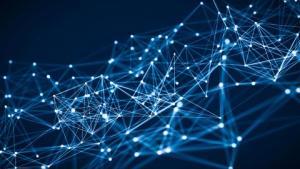 We are most fortunate that Dr Giovanni Strona of the EU Joint Research Centrein Ispra, Italy, will be visiting Flinders University for most of April. As a recipient of the prestigious International Visitor Fellowship, Dr Strona has kindly agreed to give a day-long (and hands-on) workshop in network modelling.
We are most fortunate that Dr Giovanni Strona of the EU Joint Research Centrein Ispra, Italy, will be visiting Flinders University for most of April. As a recipient of the prestigious International Visitor Fellowship, Dr Strona has kindly agreed to give a day-long (and hands-on) workshop in network modelling.
What is network analysis? Well, anything that is connected to other things is ostensibly a ‘network’ — think social-media users, neurones, electric elements in a circuit, or species in an ecological community. It doesn’t really matter what the ‘nodes’ of a network actually represent, because all networks more or less share the same properties. The analysis of network structure and behavior is what Dr Strona will focus on for the workshop.
Being ecologists, we will of course be primarily interested in ecological networks, but maths and coding is essentially the same for all types of networks. Interested in attending this free and rare opportunity? If so, please register your interest here.
The workshop will be held at the Bedford Park Campus of Flinders University from 09:00-17:00 on 29 April 2019. The outline of the workshop is described in more detail below.
1. Brief introduction to theory
- background history
- basic definitions
- examples of applications (ecology and beyond)
- major defining network properties, with real-world examples (e.g., edge directionality and weight, unimode versus bipartite networks)
- formal network representation (e.g., edge list versus adjacency matrix);
- basic local and global properties (node degree – degree distribution; path length – diameter; clustering; k-coreness; edge betweenness; PageRank …;
- different kinds of networks (regular, random, power law)
- network visualisation
2. Programming training
Attendants will learn to:
- download ecological network data from various online datasets
- load those data in network format
- generate random network with given properties
- measure local and global network properties (and rank nodes according to different criteria of importance)
- manipulate/modify networks (add and remove nodes and edges; extract sub-networks; randomise links)
- evaluate network robustness/simulate network collapse following the loss of nodes
- visualise networks (also using 3D-animation techniques)
Most of the training will be done in the R programming language. Basic knowledge of R (using a terminal) is therefore desirable. Other software tools will be introduced as well.

